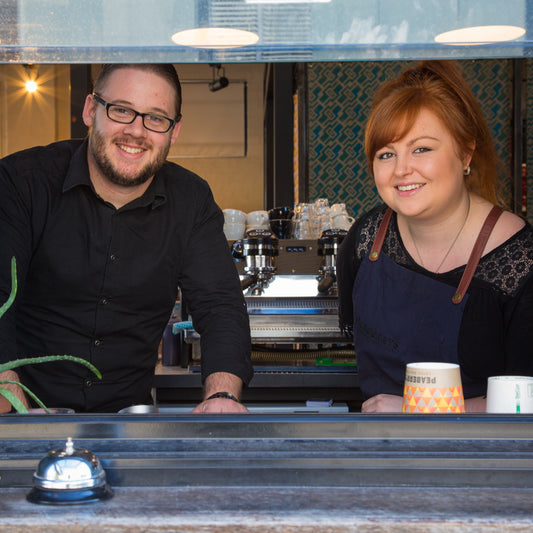It can be easy to feel like you’re making money in a cafe. Cash is in the till, the place is busy, you’re paying bills – and then someone (probably your accountant) tells you that you’re not actually make any profit.
It’s a common story, according to the Australian Taxation Office, the average operating profit in Australian coffee shops is around 10% of sales. So for a cafe doing sales of $10k / week that works out to $50k / year profit to pay yourself, interest on the business loan, tax & one day start to pay off debt…
This is obviously not ideal…so what should it be?
20%
I think that’s what we should be aiming for, unless the business is just a hobby, you need to actually see some money at the end of this.
But how?
Measure It.
As they say, what gets measured gets managed, so you’ll need
up-to-date accounts at least at the end of every month so that you actually have a clue whether you’re on track or not.
This is the 21st century, so use a cloud-based accounting system. I recommend
Xero, but from what I’m told, other systems like
MYOB Essentials or
Saasu work well also. Get your accountant to help set up the file and make sure the ‘bank feeds’ are set up and connected to your bank accounts.
Once these are set up, every time you pay a bill, that payment info is going to automatically come into the accounting system. So now you set up some ‘rules’ to tell the system where to assign that money to, send ‘payroll’ into ‘labour’, ‘rent’ into ‘rent’, coffee/milk/bread/etc into ‘cost of goods’ (or cost of sales…same thing).
You’re also going to need to get the info from your cash register / POS / till / whatever into the accounting system and make sure it matches up with the banking.
Now that’s done get your accountant to check it’s on the right track and get ready to run some reports.
Set some targets.
Once your accounts are setup, and everything is up-to-date at the end of the month, you want to find the ‘Profit & Loss’ (P&L) report in the accounting system and get that calculator ready…You should get a report that looks roughly something like this, with sales at the top and profit at the bottom.

Divide the costs for each item listed below into sales to get a percentage and you’re ready to go.
Let’s focus on the key items of Cost of Goods (aka Cost of Sales), Labour and Rent. These were the targets that I used in my cafe:

yes, I know the mix of these numbers will vary between types of cafe / coffee business. some people might have a higher cost of goods and lower rent, but I think you still aim to hit 20%.
Cost of Goods
If you don’t know what I’m talking about, It’s probably time to
click here and read up on how this works. For now we’ll use this simple explanation:
These are the costs that are directly connected to selling a product. So for a cappuccino, that would be coffee, milk, the paper cup & lid (if you sell take-away), sugar packets, etc. It doesn’t include Labour cost, rent, electricity, washing detergent or your trip to a ‘conference’.
Labour
Pretty self-evident, make sure you include costs directly connected to paying staff, such as super & worker’s comp insurance.
Click here for more on managing labour cost.
Rent
Chances are, if you’re reading this, you’re already up and running and there’s not much you can do to change your lease. If this is you, then your focus needs to be on increasing sales until this percentage comes down to the target. If you haven’t yet signed a lease (or are due to renew), then you should do your homework on what the rent needs to be before you agree on terms and get in touch with a lawyer that specialises in retail food leases to help make this happen.
Other Expenses
This will be a whole stack of smaller items: utilities, accounting, legal, travel, etc. These can add up, but I wouldn’t spend much time on these until you have a strategy to get the big 3 (Cost of Goods, Labour & Rent) under control.
My suggestion, once your system is set up and you are keeping accounts up to date:
- Run this report (the P&L) after you’ve finished reconciling each month and review where you’re at.
- Average the percentages over a 3-month period to iron out any month-to-month fluctuations due to the timing of bill payments/payroll/ etc.
- Set a quarterly plan for the next 3-month period to move towards your targets.
The whole process might take a year (or more) depending on how agressive you are and the individual circumstances of the business, but once you start hitting targets, it’s much easier to maintain profits at that level – particularly now that you know how to check.
_____________________________
That's all for now...feel free to drop us an email
sales@peaberrys.com.au - or sign up for our wholesale newsletter at the bottom of this page, to get sent more information like this once a month.
 Divide the costs for each item listed below into sales to get a percentage and you’re ready to go.
Let’s focus on the key items of Cost of Goods (aka Cost of Sales), Labour and Rent. These were the targets that I used in my cafe:
Divide the costs for each item listed below into sales to get a percentage and you’re ready to go.
Let’s focus on the key items of Cost of Goods (aka Cost of Sales), Labour and Rent. These were the targets that I used in my cafe:
 yes, I know the mix of these numbers will vary between types of cafe / coffee business. some people might have a higher cost of goods and lower rent, but I think you still aim to hit 20%.
yes, I know the mix of these numbers will vary between types of cafe / coffee business. some people might have a higher cost of goods and lower rent, but I think you still aim to hit 20%.






